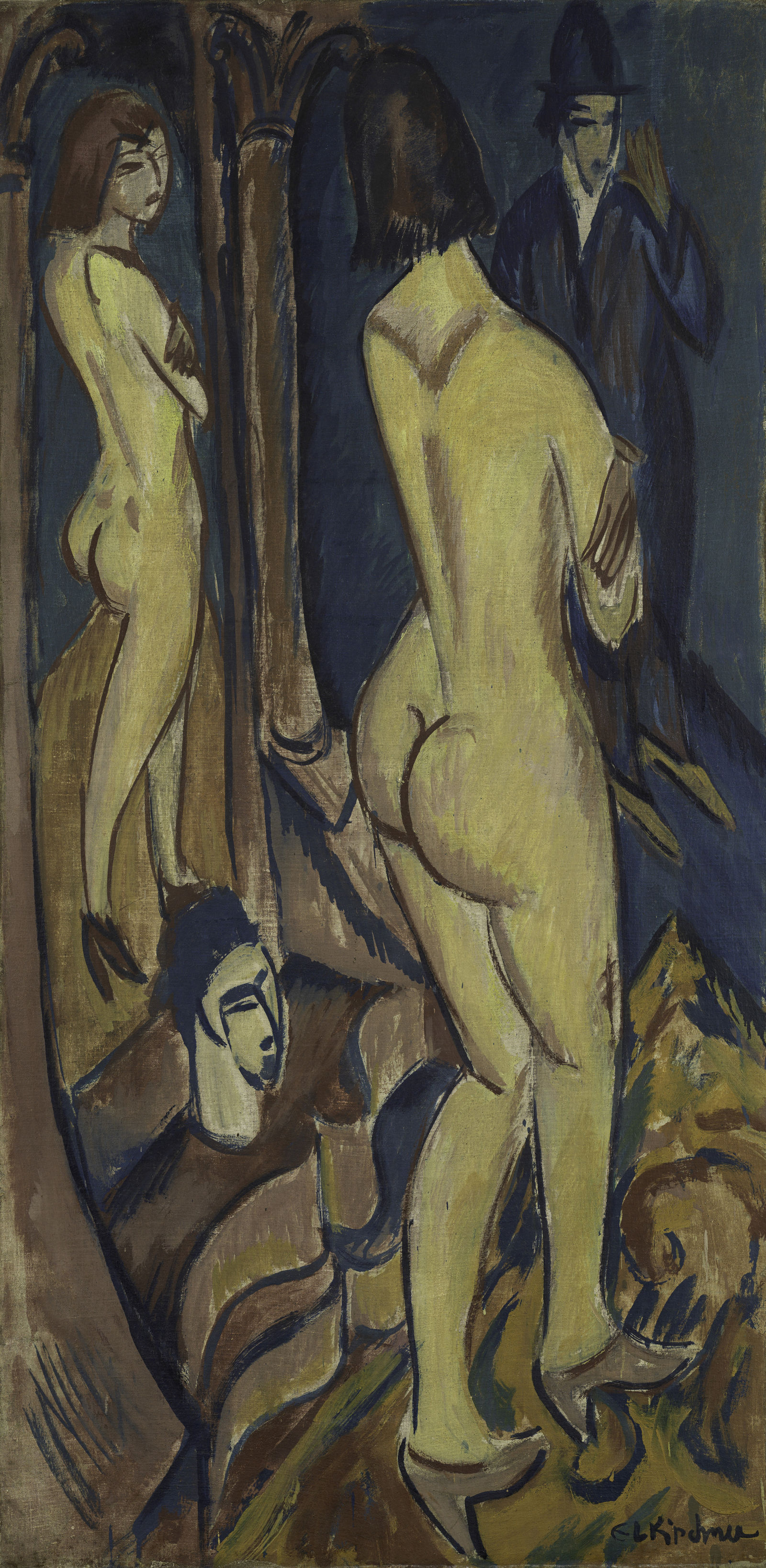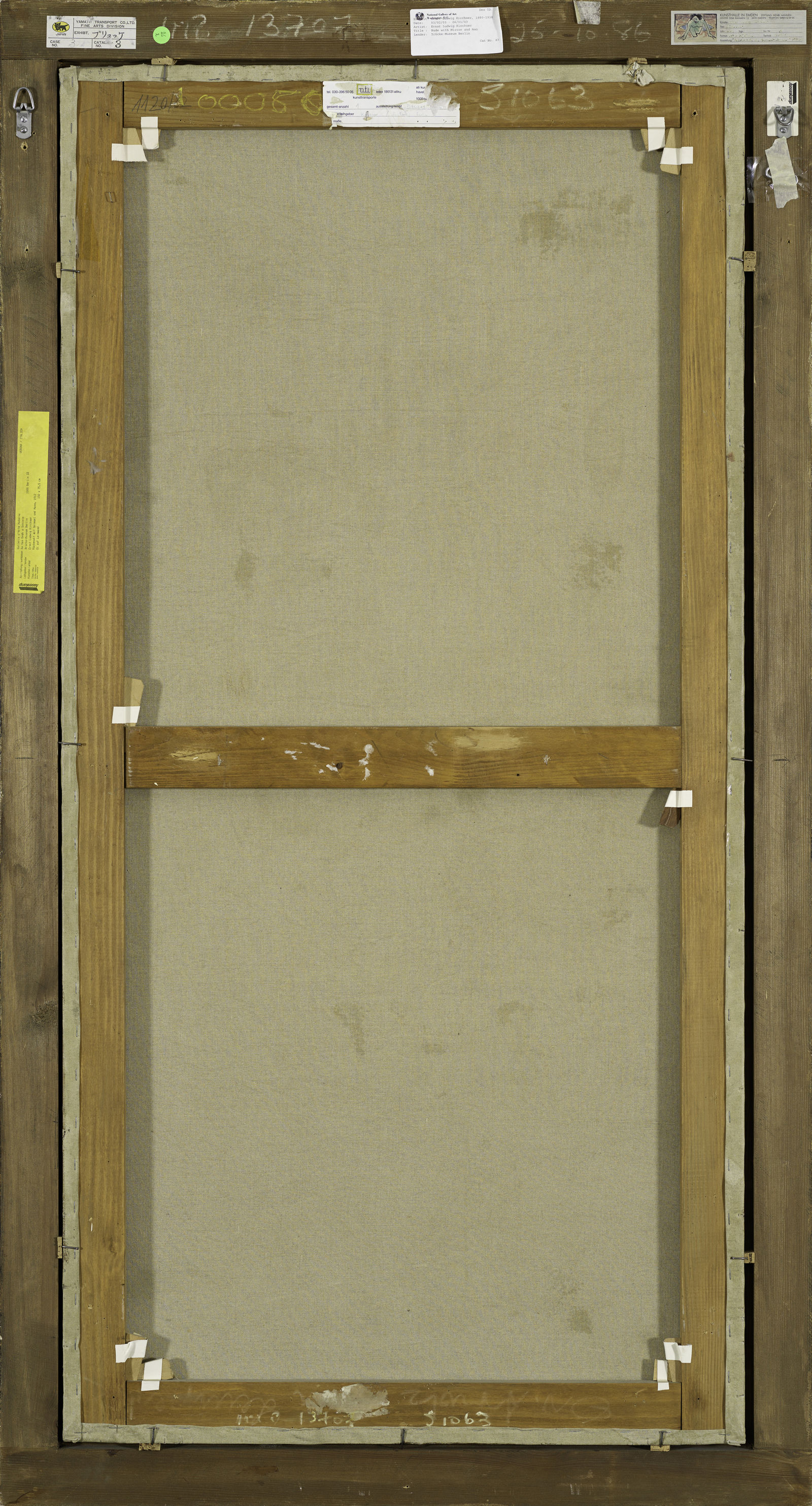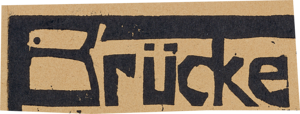

Ernst Ludwig Kirchner
Rückenakt mit Spiegel und Mann
Rahmenmaß 165,8 × 89,7 × 4,5 cm
Exhibitions (selection)
- How to Brücke-Museum: Ein Blick hinter die Kulissen , 2022/2023, Brücke-Museum, Berlin
Whose Expression? Die Künstler der Brücke im kolonialen Kontext , 2021/22, Brücke-Museum, Berlin
Kirchner and Nolde – Up for discussion, 2021, SMK – Statens Museum for Kunst, Kopenhagen
Vivian Suter. Bonzo's Dream, 2020/2021, Brücke-Museum, Berlin
Die Brücke 1905–1914, 2018/19, Museum Frieder Burda, Baden-Baden
Großstadtrausch – Naturidyll. Kirchner – Die Berliner Jahre, 2017, Kunsthaus Zürich
Christian Rohlfs. Die Begegnung mit der Moderne, 2006, Brücke-Museum, Berlin
Literature (selection)
- Magdalena M. Moeller, Das Brücke-Museum Berlin, Prestel, München 1996.
Magdalena M. Moeller (Hg.), Brücke. La nascita dell´espressionismo, Ausst.-Kat. Fondazione Antonio Mazzotta Milan, Mazzotta, Milano 1999.
Magdalena M. Moeller (Hg.), Die Brücke. Meisterwerke aus dem Brücke-Museum Berlin, Ausst.-Kat. Brücke-Museum Berlin, Hirmer Verlag, München 2000.
Magdalena M. Moeller (Hg.), Ernst Ludwig Kirchner. Neuerwerbungen seit 1988, Hirmer Verlag, München 2001.
Javier Arnaldo, Magdalena M. Moeller (Hg.), Brücke. Die Geburt des deutschen Expressionismus, Ausst.-Kat. Berlinische Galerie, Hirmer Verlag, München 2005.
Javier Arnaldo, Magdalena M. Moeller (Hg.), Brücke. El nacimiento del expresionismo alemán, Ausst.-Kat. Museo Thyssen-Bornesza Madrid/Fundación Caja Madrid, Madrid 2005.
Brücke. El naixement de l'expressionisme alemany, Ausst.-Kat. Museu Nacional d'Art de Catalunya Barcelona, Lunwerg, Barcelona 2005.
Dirk Luckow, Magdalena M. Moeller, Peter Thurmann (Hg.), Christian Rohlfs. Die Begegnung mit der Moderne, Ausst.-Kat. Kunsthalle zu Kiel / Brücke-Museum Berlin, Hirmer Verlag, München 2005.
Magdalena M. Moeller (Hg.), Brücke-Museum Berlin, Malerei und Plastik. Kommentiertes Verzeichnis der Bestände, Hirmer Verlag, München 2006.
Magdalena M. Moeller (Hg.), Brücke Highlights, Hirmer Verlag, München 2007.
Magdalena M. Moeller (Hg.), Brücke Museum Highlights, Hirmer Verlag, München 2017.
Details
Tags
Bildgattung: Figurenbild, Szene, Akt
Schlagwort: Großstadt, Interieur, Rückenakt
GND
Referenz: Außereuropäische Kunst
Iconclass
sich unbekleidet, (fast) nackt zeigen
stehende Figur – AA – weibliche Figur
stehende Figur
Spiegelung (in einem Spiegel)
Hausinneres
erwachsene Frau
erwachsener Mann
Skulptur, Plastik, Bildhauerkunst
Schuhe, Sandalen
Spiegel
Inscription/Signature
Signiert unten rechts:
EL Kirchner (Signatur)
Nicht bezeichnet (Bezeichnung)
Inventory Number
2/88
Catalog Number
Gordon 225

